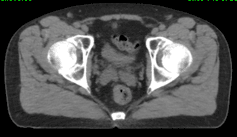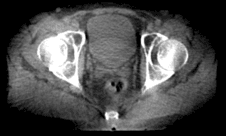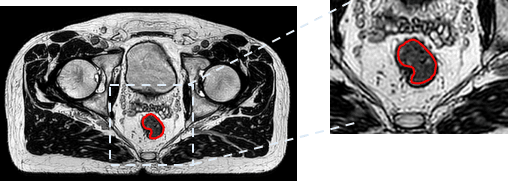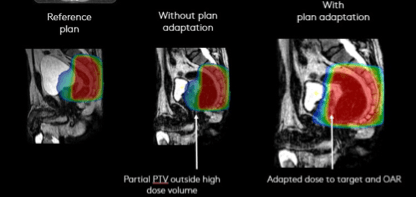The power of daily adaptation for rectal cancer
Courtesy of Dr. Martijn Intven, UMC Utrecht, NDL
Overview
Patient with a small clinical T2N1 rectal adenocarcinoma 6 cm from the anal verge.
Rational for using Elekta Unity
To be able to clearly visualize tumor and surrounding normal tissues and consequently optimally adapt the treatment field to the daily anatomy changes in the pelvis such as differences in rectal and bladder filling.



Beams
The team evaluated what would have happened if the reference plan had been applied to each fraction.
At fraction #5 the anterior wall of the rectum, which should have been irradiated, would have been missed.
With Elekta Unity, the team was able to adapt the plan delivered at every fraction. As seen below, due to this daily adaptation, the entire target volume was irradiated as planned.

Technical planning comments
As one of the first rectal cancer treatments performed, standard margins (10 mm) were used around CTV mesorectum and elective lymph node regions to gain confidence. The patient was treated in five fractions of 5 Gy, with a five-field IMRT delivery.
Report
Re-staging eight weeks after treatment showed a clinical complete response, and the patient entered a wait-and-see study.